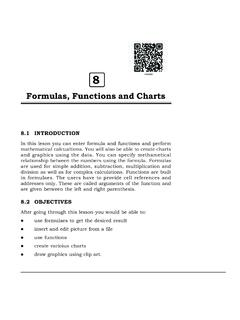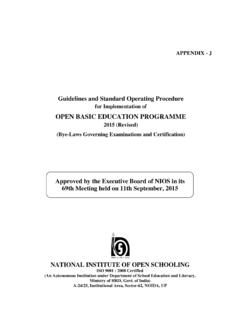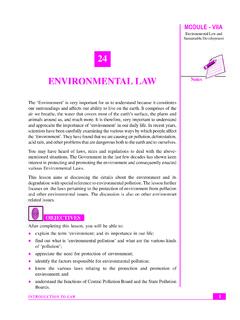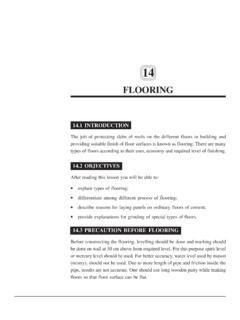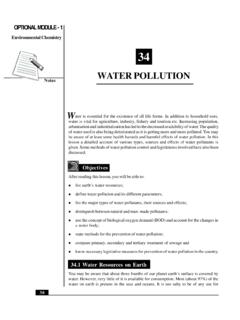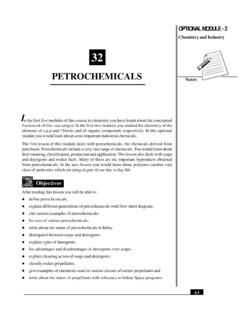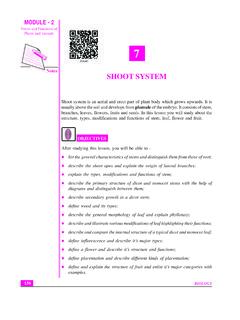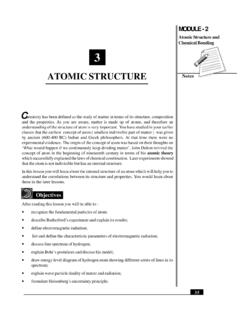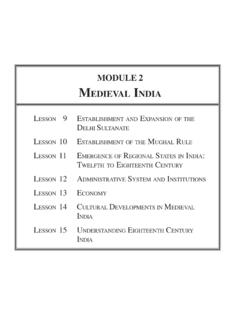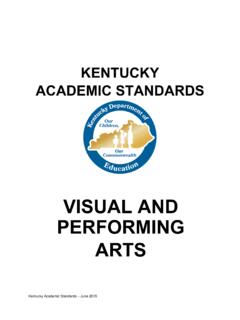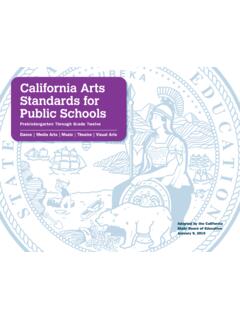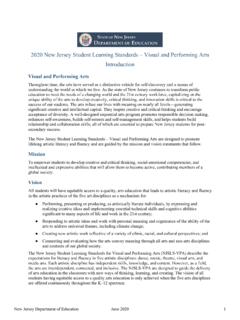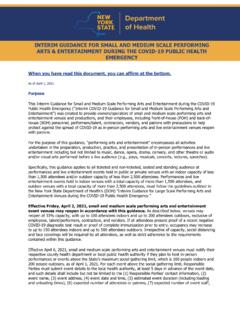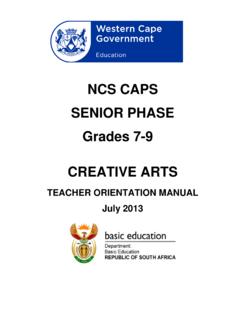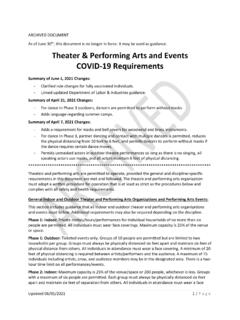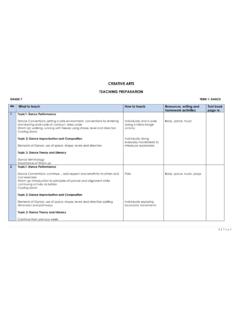Transcription of 12 PERFORMING ARTS: MUSIC, DANCE AND DRAMA
1 PERFORMING arts : music , DANCE and DramaNotesIndian Culture and Heritage Secondary Course 168 MODULE - VPainting, PERFORMING Artsand Architecture12 PERFORMING arts : music , DANCE AND DRAMAM usic, DANCE , DRAMA , folk theatre or puppetry our country India, had all of it inabundance. Oh! somebody playing the Dhol ( music instrument) and there ismusic, we run to see what it is. Well, it is Lohri which is normally held on 13thJanuary every year in the Northern part of our country. People are singing and dancingwith a lot of enthusiasam.
2 These dances are called Bhangra and Gidda in Punjab. Thesesongs and dances portray the various stages in our lives. They reflect the socio-religiouscustoms and practices of rural people earlier, but now are a part of modern city culturealso. No school programme is complete without them. They are linked through centuriesof celebration and might have started with fertility rites to obtain prosperity for the agriculturalcommunity fertility of land and cattle but also of birth and survival of children. There aremany reasons for celebration that it is difficult to list them.
3 Why don t you make a list ofthese activities and find out how and why people celebrate them. You will not only find thisactivity interesting but you will be unable to put a full stop to it. Do you know why?Because the number is so large that you will never be able to know all the music , danceand DRAMA that our country is a land of rich culture and heritage. Since the beginning of our civilization, music , DANCE and DRAMA have been an integral aspect of our culture. Initially, these art forms wereused as medium of propagation for religion and social reforms in which music and dancewere incorporated to gain popularity.
4 From the Vedic era to the medieval period, theperforming arts remained an important source of educating the masses. The Vedas laiddown precise rules for the chanting of Vedic hymns. Even the pitch and the accent ofsinging different hymns have been prescribed. There was more of exemplary presentationthrough them than education or social reforms. Presently, these art forms have becomemeans of entertainment for people all over the arts : music , DANCE and DramaNotes 169 Indian Culture and Heritage Secondary CourseMODULE - VPainting, PERFORMING Artsand Architecture OBJECTIVESA fter reading this lesson you will be able to: explain the aims and objectives of PERFORMING arts and their development throughvarious stages; describe the utility of PERFORMING arts during the ancient and the medieval period.
5 Recognise the contribution of Sufi and Bhakti saints to music ; distinguish between Hindustani classical music and Carnatic music ; appreciate the contribution of classical dances, folk music as well as folk dancesin Indian culture; explain the development of DRAMA through various phases in India and recognisethe contribution of folk theatre; examine the importance of the three art forms in the development of humanpersonality; and analyse the present scenario of music , DANCE and DRAMA . CONCEPT OF PERFORMING ARTSWhat is art?
6 Art is an expression of all characteristics of the human mind aesthetically .These characteristics, the varied human emotions, are known as RAS . In Hindi, ras literally means a sugary juice. It signifies the ultimate satisfaction of aanand . Human emotionscan be categorized into nine sub-headings or navras . They are:1. Hasya laughter2. Bhayanak evil Shringar aesthetics3. Rudra chivalrous4. Karun pathos5. Vir courage6. Adbhut astonishing7. Vibhatsa terrifying glory8. Shaanti peace9.
7 Shringaar decorating one s selfArt reflects human emotions and human beings spontaneously express their frame of mindthrough various art forms. Thus the intellectual mind merges with the artistic streak, givingbirth to art. The expression is reflected in various styles like singing, dancing, drawing, PERFORMING arts : music , DANCE and DramaNotesIndian Culture and Heritage Secondary Course 170 MODULE - VPainting, PERFORMING Artsand Architecturepainting, acting, sculpture. Some of these are expressed through live performances andothers through visual arts .
8 Sketching, painting, sculpture are visual arts . Singing, dancing,acting are attributes of PERFORMING arts . music from time immemorial has been the mostpopular art form of India. They are Sa, Re, Ga, Ma, Pa, Dha, NeThe earliest tradition of Indian music may be traced to Sama Veda which contained theslokas that were put to music . Chanting of Vedic hymns with prescribed pitch and accentstill form a part of religious rituals. The earliest text dealing exclusively with PERFORMING artsis Bharata s Natyashashtra (compiled between second century BC and second centuryAD) which has six chapters on music .
9 Another major text is Matanga s Brihaddesi compiledbetween eight and ninth century AD. In this work ragas were first named and discussed atgreat length. Sangeet Ratnakara written by Sarangdeva in the thirteenth century mentions264 ragas. A variety of string and wind instruments were invented over the period of ancient texts references have been made to flutes, drums, veena, and cymbals. Manyrulers such as Samudragupta, King Bhoja of Dhara and King Someshavra of Kalyanapatronised music . The Gupta monarch Samudra Gupta was himself an accompolishedmusician.
10 In some of his coins, he is shown playing on the Veena. music was also associatedwith the worship of Gods and Goddess in the temples. In the twelfth century, Jayadeva ofOrissa produced the most brilliant raga kavya, the Gita Govinda, each song of whichwas set in a raga and was composed on the theme of love of Radha and s (993-1055) Abhinavabharati provides useful information about music has a number of terms and concepts parallel to what is found in Sanskrit Saivite Nayanars and Vaishnavite Alvars too set their psalms (poems) to in the medieval period the Sufi and Bhakti saints encouraged music .
